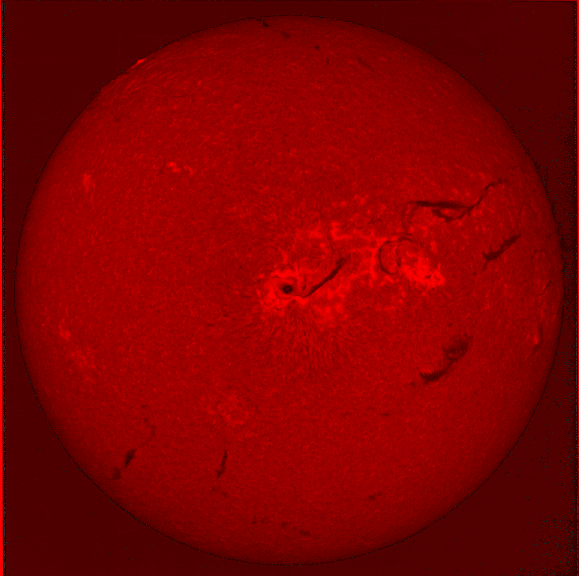- The Sun is a hot ball of self-luminous gas. It has neither
a solid surface nor a solid interior and yet it
appears to have an edge.
Why?
- The Sun is a G2 V (Main Sequence) star.
The Sun
is a little above average
in mass for a star in our Galaxy (the average stellar
mass is 30 % of the mass of the Sun), but overall, it is a fairly
typical star.
- It resides in the large grouping of
stars referred to as the Milky Way
(optical,
DIRBE).
The Milky Way is a spiral galaxy
(e.g., see these views of a top down view of a spiral galaxy,
M51, the Whirlpool galaxy, and an edge-on view (a
side view) of a spiral galaxy
M104,
the Sombrero galaxy)
composed of
~ 200 billion stars. The Sun lives in one of its spiral arms
of the Milky Way, roughly 2/3 of
the way out from the center of the galaxy,
whizzing around the center of the
galaxy at a speed of around 200 kilometers per second.
For the next few lectures, we look at the present state of the
Sun in more detail. We
look at the following two topics:
- The Interior Structure of the Sun
--At the present time for the most part, the Sun neither
changes in size nor in its temperature.
This means that the Sun today is
roughly in mechanical (hydrostatic) equilibrium and thermal equibrilium.
(1) Mechanical, hydrostatic equilibrium means the internal forces in the
interior of the Sun
are in exact balance; the inward pull of gravity is balanced by the outward
push of gas pressure. (2) Thermal equilibrium means that the energy losses
from the Sun's surface through radiation are exactly balanced by the energy
generation from nuclear fusion taking place in the interior of the Sun.The Sun, in fact, spends its entire lifetime trying to maintain
itself in hydrostatic and
thermal equilibrium. It is when the Sun finds itself out mechanical and
thermal equilibrium that it shows rapid changes.
-
The Quiet vs Active Sun--Even though the Sun does not
evolve very quickly today, we know that the Sun is in fact variable. We have
already mentioned the Solar Activity Cycle
where activity as manifested by
the number of Sunpots, Solar flares, and other events periodically change with
time (periods ranging from 7 to 15 years with an average of around 11 years),
and how the long-term cycle also changes with time. The changes are
small, luminosity changes of less than 0.1 %, negligible when considered in
terms of the overall equilibrium
conditions described above.



